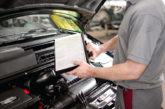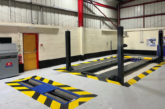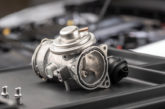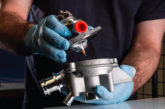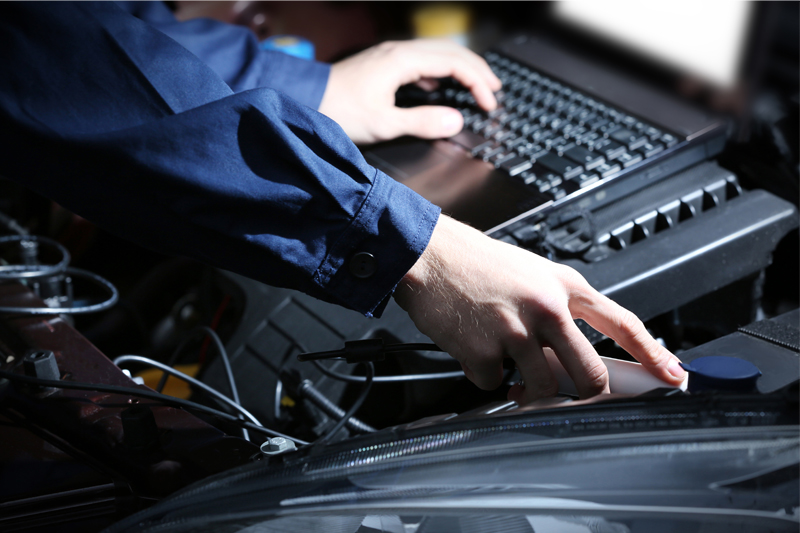
Neil Pattemore, technical director at UK AFCAR, an alliance of 11 UK organisations who share a common interest in the future and prosperity of the aftermarket, is emphasising the role real-life evidence has to play in the fight for a fairer landscape for independent workshops seeking to access RMI data when undertaking vehicle repairs.
It’s elementary, my dear Watson’, as a well known sleuth from Baker Street reportedly once said. Even if this phrase never actually appears in any of the Sherlock Holmes novels, the principle is important when looking for evidence related to the future success of any independent workshop in the UK aftermarket. You may now be asking why ‘evidence’ is something critically important in your ability to service and repair vehicles, so let me explain why this has increasingly become the case.
In simple terms, as we all know, today’s vehicles have become ‘computers on wheels’ with software controlling most of the functions and the associated diagnostic tools being ever more powerful to communicate with the vehicle and its on-board systems.
However, the access to the vehicle’s systems has also changed. With the OBD port supporting decreasing levels of data and information, whilst the telematics interface supports an increasing level of access ‘over the air’ to the vehicle manufacturers’ embedded applications for diagnostics, service and maintenance requirements and other vehicle functions.
This has created a widening gap between what is available to the vehicle manufacturer and what is then made available to the workshop – whether that is an authorised repairer or (even worse) an independent workshop. This highlights how the vehicle manufacturer has increasingly become the sole and controlling source about the way that a vehicle can be accessed, together with what information and data is made available to provide ‘repair and maintenance services’.
If we go back to when vehicle electronics first became commonplace, all access was via a physical connector which soon became the standardised OBD connector we still use today. This supported access to all the data necessary to diagnose, service and repair and equally allowed ‘reverse engineering’ for diagnostic tool manufacturers to develop their multi-brand tools.
As the vehicle manufacturer implemented an increasing range of electronically controlled systems in their vehicles that required electronic data and dedicated communication protocols, it became clear that the vehicle manufacturers controlled the source of the technical requirements needed to diagnose and repair a vehicle.
Subsequently, it was necessary to have legislation to ensure effective competition in the aftermarket between main dealers and independent workshops and as the UK was part of the European Union, this was discussed and ultimately implemented as EU legislation. This was done in two elements – firstly under Competition Law which was implemented as the original ‘Motor Vehicle Block Exemption Regulation’ (MV-BER) and which came into force in 2002. However, although this introduced the principle of ‘non-discrimination’ between ‘authorised repairers’ (i.e. main dealers) and ‘independent operators’ (which included independent workshops, but also parts providers, publishers of technical information, diagnostic tool manufacturers, technical trainers etc.) there were diverse interpretations across some vehicle manufacturers as to what the legislation actually meant in practical terms.
To better understand these ‘grey areas’, the European Commission requested evidence from the aftermarket, as well as receiving questions requesting guidance from some of the vehicle manufacturers. It became clear that although the MV-BER described the key principles of the political and legal intent, there were many elements where the technical details were open to interpretation which could not be defined in Competition Law.
Subsequently, the European Commission decided to include these technical requirements as part of (the then new) ‘Euro 5’ legislation, introduced in 2007. This was generically described as being the ‘access to repair and maintenance information’ (RMI). This provided better clarity, as well as introducing the requirement for vehicle manufacturers to declare their compliance with the legislation as part of their ‘whole vehicle type approval’. Should any ‘non-compliance’ issues be identified by an independent operator or an aftermarket trade association, the legislation also included that this could be checked by the vehicle type approval authorities.
So far this was ‘all fine and dandy’ as our American cousins say!
Changing landscape
Unfortunately, as the years have passed, vehicle technology has progressed exponentially, creating new challenges for the aftermarket. It was becoming clear that legislation needed to be revised to keep pace with the (rapidly) evolving technologies which had reared their ugly head.
However, for the legislator to play ‘catchup’ is not easy, as they generally react to what is known and not what may be coming over the horizon. There may be ‘specific certainties’ which will have a predictable impact, but these are rare. A good example currently is the (mandated) vehicle type approval requirement for cybersecurity that applied from July 2022 for new vehicle types being approved and will apply for new vehicles being sold from July 2024 (I must add here that low volume/specialist vehicles have slightly different dates). For other revisions to the legislative requirements, generally it needs to be based on evidence from the marketplace.
This has become particularly important as the aftermarket itself has also evolved from workshops competing at a local level, to now include the vehicle manufacturers themselves entering the aftermarket to sell their own services, which includes many aspects that would otherwise have been performed only once a vehicle was in a workshop. This has created new business models for the vehicle manufacturers and their authorised networks, but is distorting competition in the aftermarket in a number of different ways. This is most directly related to the exclusive ability for the vehicle manufacturers to remotely communicate to the vehicle and its data, using over-the-air access with embedded diagnostic and servicing requirements algorithms. This provides a significant advantage and can reduce the cost of diagnosis and repair by 50 per cent.
Quite simply, independent repairers do not have the same ability.
To counter this type of threat, the aftermarket associations in Brussels and some of their members funded legal challenges via the European Court of Justice (the ECJ) – all of which were found in favour of the aftermarket. However, challenges made by the vehicle manufacturers against one of the verdicts is resulting in amendments to the vehicle type approval requirements to address the conditions of accessing the vehicle and its data via the OBD port – quite important for the aftermarket!
This brings me back to how you can help the aftermarket associations to help you in ensuring the right legislative support will be in place: evidence!
There is no substitute to providing ‘real life examples’ of where the things that you were once able, or should be able to do, but can’t, need to be logged. This only takes a simple action – click here, and enter the relevant details and information, which can then be collated to show the issues that need to be addressed. The future of your business and the wider UK aftermarket is in your hands.

